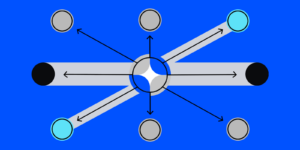
Fault Proofs Go Live on Base Testnet: A Leap Towards Decentralization
Quick Take:
- Fault Proofs Active: Base Sepolia testnet now features fault proofs, enhancing decentralization.
- Permissionless Participation: Users can now propose or challenge the state of L2 networks without central authority.
- Path to Mainnet: Testing on Sepolia testnet sets the stage for a secure mainnet deployment.
Fault proofs have just been activated on the Base Sepolia testnet, marking a significant advancement in Base’s commitment to progressive decentralization. This development not only underscores Base’s dedication to scalability and decentralization but also introduces a new era of permissionless interaction within its Layer 2 (L2) infrastructure.
Understanding Fault Proofs
Fault proofs are designed to democratize the verification process of state proposals on L2 solutions. Traditionally, only the centralized proposer—controlled by the chain operators—could submit claims about the state of an L2 to Ethereum. Now, with the introduction of fault proofs, any participant can propose or challenge these claims, ensuring a more distributed form of governance and oversight.
This mechanism is crucial for reducing reliance on central parties for state verification, thus enhancing the transparency and security of the network. It represents a foundational step towards achieving a more decentralized network, where community-driven accountability takes precedence.
Decentralization Stages Explained
The implementation of fault proofs is part of a broader strategy to transition through various stages of decentralization, as outlined by Ethereum’s co-founder, Vitalik Buterin. Starting from Stage 0, where all transactions and validity checks are managed by the chain’s operators, Base is moving towards Stage 1. This stage introduces fault proofs with an override mechanism to safeguard against potential bugs, reducing the dependency on central operators.
Stage 2 will only see changes to the L2 state in response to detected bugs, and any contract upgrades will undergo a 30-day delay to allow for community feedback and withdrawal if disagreements arise.
Towards Stage 1 Decentralization
The launch on the Sepolia testnet is not just a testbed for technology but a crucial step towards achieving Stage 1 Decentralization. The next milestone for Base involves integrating the Security Council into the contract upgrade keys, further distributing the power to make significant decisions to a broader group of stakeholders, beyond just the initial operators.
This move aligns with the Superchain vision, where the Optimism Security Council, guided by Optimism Governance, will play a pivotal role. The council’s structure and incentives are designed to nurture the growth of the entire ecosystem, supporting a scalable and decentralized infrastructure.
What’s Next?
Base remains steadfast in its commitment to decentralization and stability. With fault proofs now live on the Sepolia testnet, the focus shifts towards ensuring a smooth and secure transition to the mainnet. This development is not just a technical upgrade; it’s a stride towards realizing the vision of a decentralized and accessible internet.
As we continue to monitor the progress of Base’s decentralization journey, the implications for the broader L2 ecosystem are profound. The integration of community-driven mechanisms like fault proofs could redefine the principles of transparency and security across decentralized networks.
Explore more about Metacade and join the community on our Tournaments platform and Discord server.


















